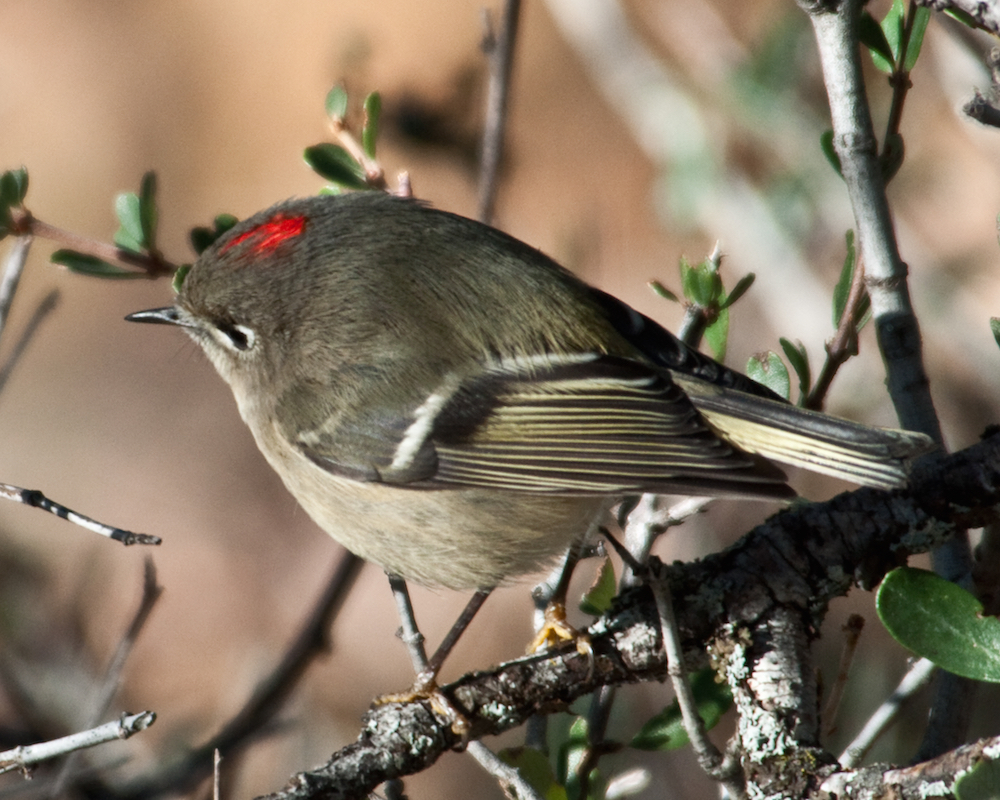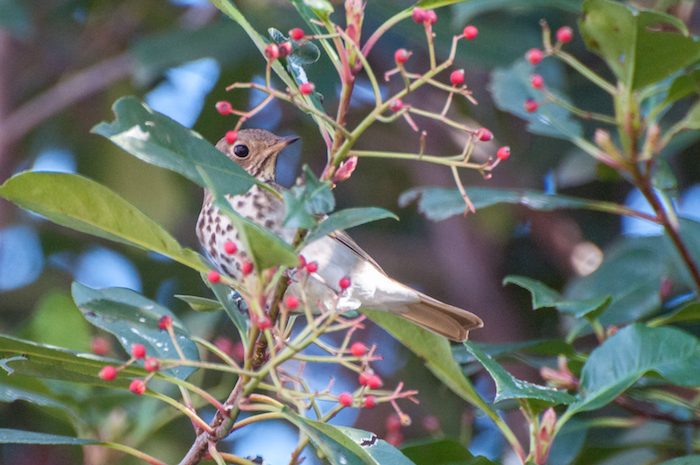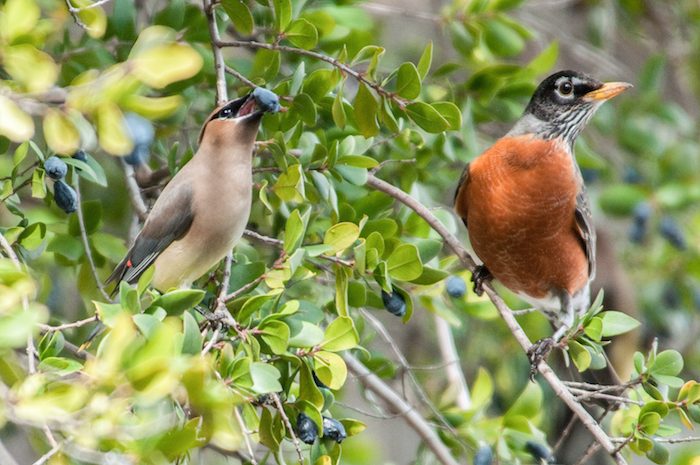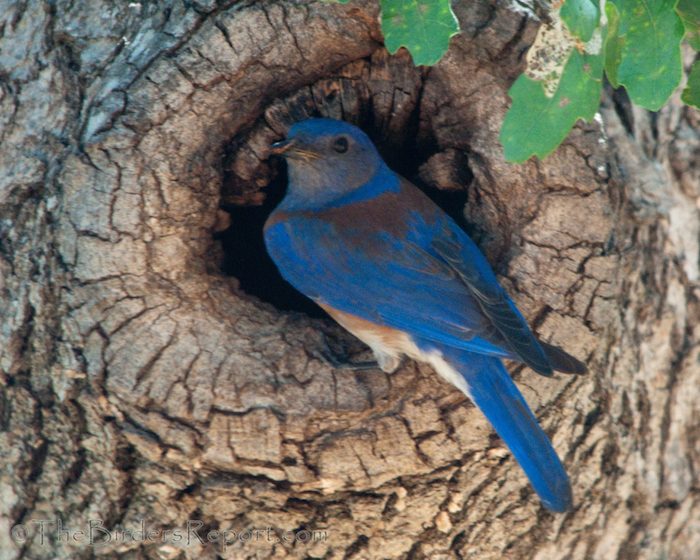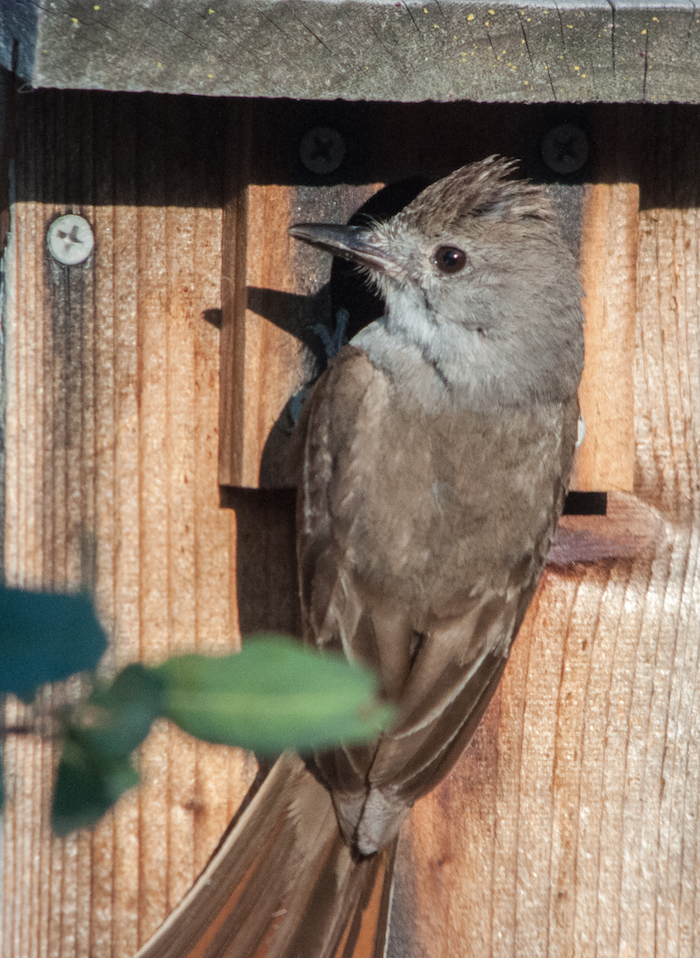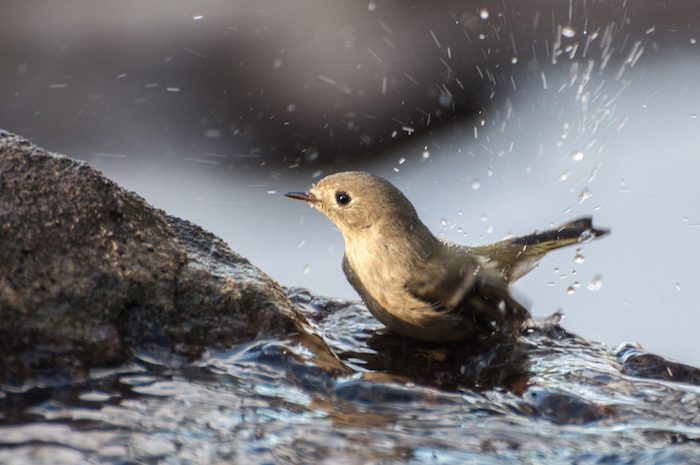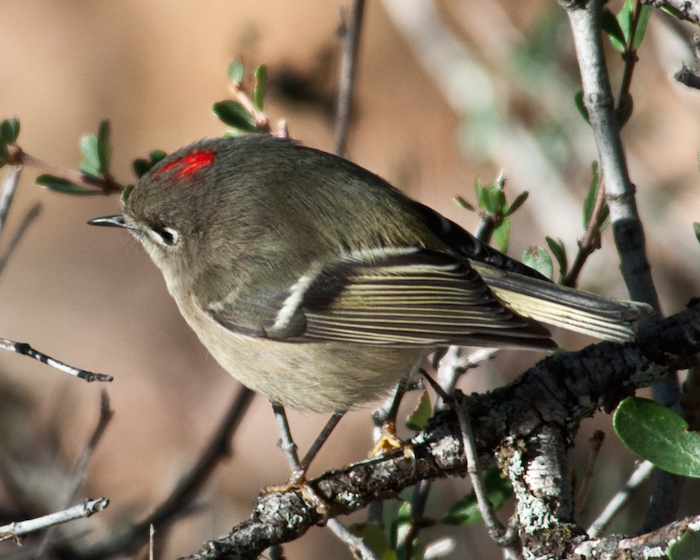
Ruby-crowned Kinglet Male
On frosty winter mornings when just a few minutes outside has your cold fingers complaining and refusing nimbleness, think of the hummingbird. This creature no bigger than your pinky has perched outside all through the starry night, and before the frost is gone will be darting about lapping up nectar and snapping up insects. How do they do it?
Birds are wonderfully well adapted to dealing with cold. Most creatures become inactive when the temperature drops low. Insects may survive as hidden eggs or cocoons. Lizards lie motionless under a log. But like us mammals, birds are warm-blooded, and warm-bloodedness allows activity even in the cold. Of course, like any furnace, warm-bloodedness requires energy. Birds must eat!
Little birds especially, with their limited capacity for fat storage and the greater exposure of small things to the elements, seem almost constantly ravenous throughout the daylight hours. Tiny hummingbirds can devour up to three times their weight in a day. Kinglets flitter nonstop in their almost frantic hunt for winter insects. Rolling packs of chickadees glean over fir needles, green in their snowy mountain homes. A robin may be the size of your pet boa, but it must dine more, and more often.
Warm-bloodedness also needs insulation to be effective. Naked scales might work for our cold-blooded relatives, but mammals have fur and birds have feathers, nature’s finest insulation. Beneath their outer contour feathers, birds wear the thin but dense layer of down that traps still air, keeping their bodies at a comfortable 104 degrees even as winter chases less robust creatures, like grizzly bears, into protected hideaways. When the cold bites especially hard, birds can fluff their feathers to increase insulation, and pull their heads down on their shoulders, or tuck them under a wing.
Of course, their feathers must be kept dry. Like us, most birds have natural body oil. They spread this oil from a gland at the base of their tails, keeping their feathers glistening, both beautiful and waterproof.
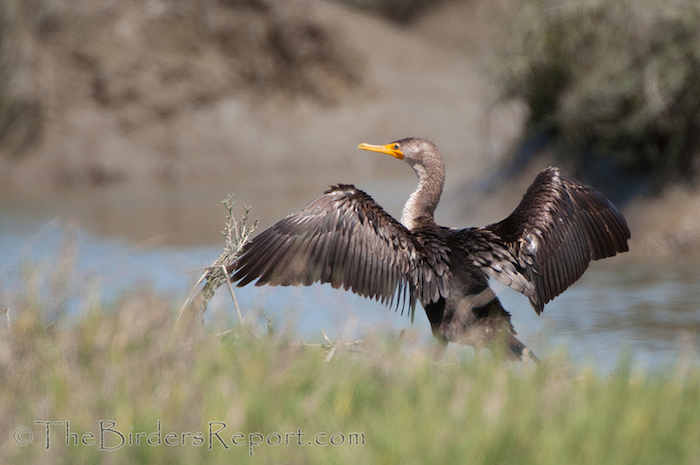
Double-crested Cormorant Wings Spread
Most water birds produce plenty of this preening oil, but oddly one of our diving birds produces hardly any. Apparently the advantage of pursuing fish without the buoyancy of dry feathers can compensate for getting wet. Instead of preening, however, cormorants stand in the sun with their wings held out to dry, a performance visible all along the Sacramento River.
Birds are also vulnerable to cold through their unfeathered feet. Long-legged herons and egrets are particularly exposed. Handily, the birds have a built-in heat-exchanger. Arteries carrying warm blood from the feathered body are intertwined in the legs with veins carrying chilled blood from the feet. Heat naturally dissipates, warming the veins and cooling the arteries. The result is that some heat is quickly returned to the warm core, and, especially in icy habitats, the feet just live at much colder temperatures than the rest of the body. Birds handle this by keeping their heat-loving muscles in their warm bodies, with little more than bones and tendons nakedly exposed. Also, watch a heron or egret. They frequently stand on just one leg, tucking the other up into their feathers, warming their toes and reducing heat loss.
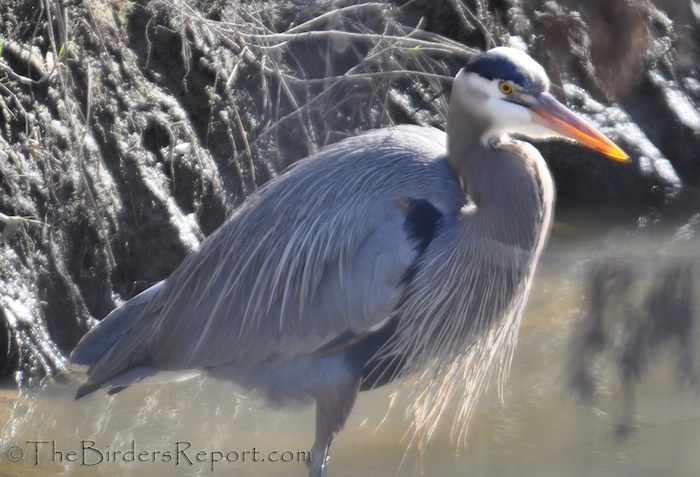
Great Blue Heron
Different birds undertake a variety of other strategies to survive the cold. Watch a robin face the morning sun, catching that warmth full on. Little nuthatches huddle together in tree cavities. Hummingbirds can actually go into overnight torpor, a mini-hibernation in which their body temperature drops as much as 50 degrees and their heart-rate slows from 500 to 50 beats per minute, saving precious energy. Poorwills, the western cousins of the whip-poor-will, can enter that state of torpor for weeks at a time.
Migration, of course, is perhaps the grandest adaptation to cold. But with birds, so well suited to handling Earth’s normal chills, migration may reflect the pursuit of food more immediately than the temperature change. Birds cannot survive when seeds are covered by snow, or fish by ice, or when fruits are picked clean or insects have ceased to crawl and flutter. Without food, it’s time to go. But a chill morning? Pah! Put on your coat and watch them!
